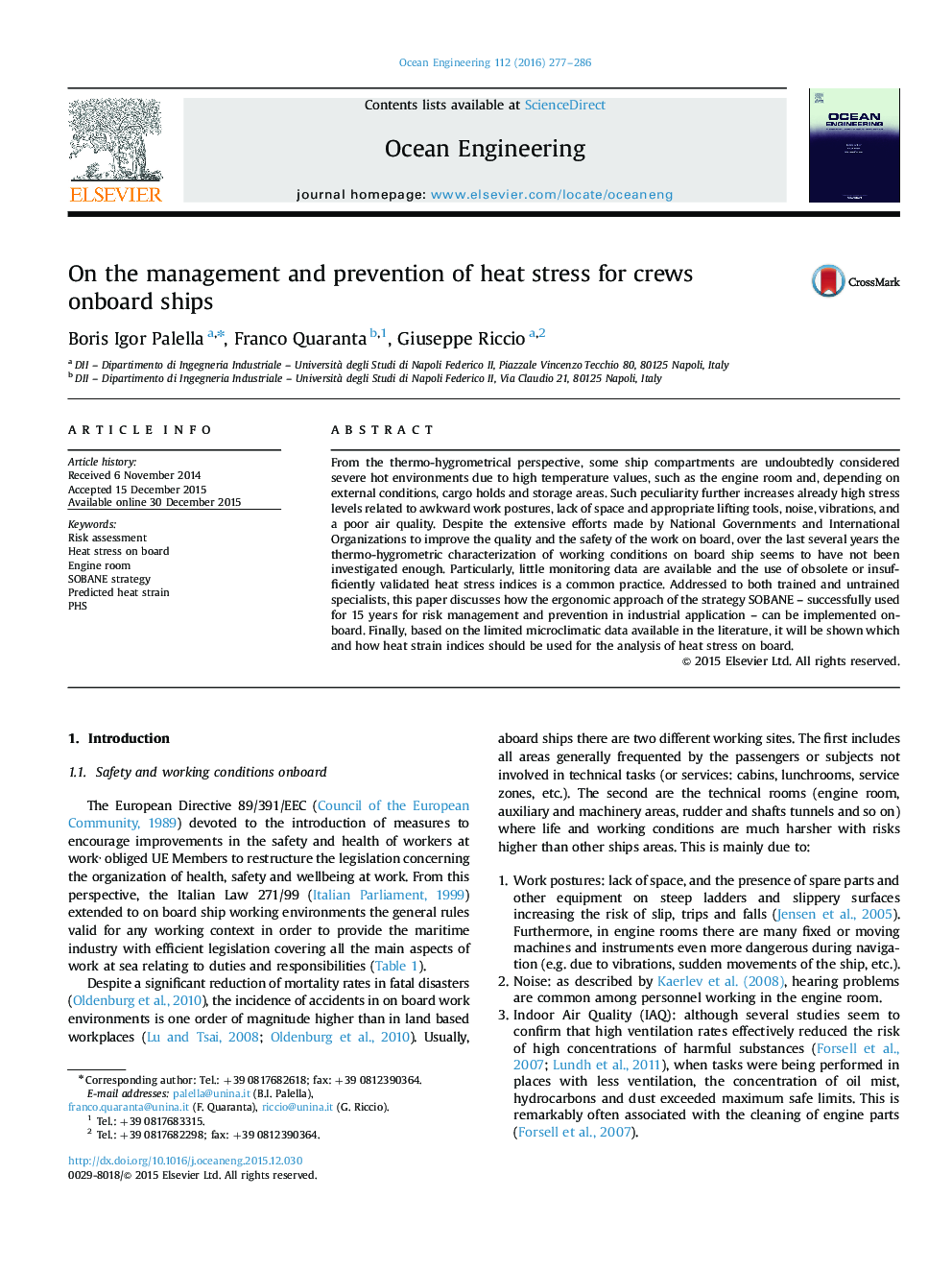| Article ID | Journal | Published Year | Pages | File Type |
|---|---|---|---|---|
| 1725178 | Ocean Engineering | 2016 | 10 Pages |
From the thermo-hygrometrical perspective, some ship compartments are undoubtedly considered severe hot environments due to high temperature values, such as the engine room and, depending on external conditions, cargo holds and storage areas. Such peculiarity further increases already high stress levels related to awkward work postures, lack of space and appropriate lifting tools, noise, vibrations, and a poor air quality. Despite the extensive efforts made by National Governments and International Organizations to improve the quality and the safety of the work on board, over the last several years the thermo-hygrometric characterization of working conditions on board ship seems to have not been investigated enough. Particularly, little monitoring data are available and the use of obsolete or insufficiently validated heat stress indices is a common practice. Addressed to both trained and untrained specialists, this paper discusses how the ergonomic approach of the strategy SOBANE – successfully used for 15 years for risk management and prevention in industrial application – can be implemented on-board. Finally, based on the limited microclimatic data available in the literature, it will be shown which and how heat strain indices should be used for the analysis of heat stress on board.
